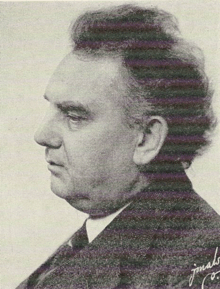Aksel Agerby
Aksel Agerby (May 29, 1889 – March 20, 1942) was a Danish composer, organist, and music administrator. He also operated his own Music Publishing company, which published both his work and those of others.

Work
Agerby was blind and was trained as an organist and pianist at the Danish Royal Blind Institute and the Copenhagen Organist School. From 1921, he was an organist at Copenhagen Funeral services and from 1930 until his death, he played the organ at Brønshøj Church. Today, he is chiefly remembered for one small piece of music, the melody for Jeg er havren. A few other songs of his were recorded, some with Aksel Schiøtz. His musical output also included some songs and a few instrumental compositions, sometimes backed up by an orchestra.
Most of his music was written for keyboard instruments; he also composed a number of works for choirs, as well as a handful of pieces for larger ensembles.
His legacy and importance to the Danish music scene lies elsewhere. He was an energetic and charismatic President of the DUT (the Young Musical Artists Society), which was, and continues to be, involved in the International Society for Contemporary Music. Agerby was chairman of the DUT from 1929 until his death, and had strong opinions and the ability to make things happen. He managed to execute a merger with the New Music (Ny Musik) Organization, thereby creating a more powerful association for contemporary music.
Compositions
Piano Music
- Jeg er havren (1916)
- Spurvene ved Helliggejst
- Jyske viser (10 songs)
- Flammende ungdom
- Jeg ved ej hvorfra du kommer
- Majnat
- Liljekonval
- Vintergækker
- En Dag
- Vor mor
- Hørvise
- Hvide børn og sorte børn
Choral compositions
- Vor tid (mixed choir)
- Glæde over foråret (male choir)
- Danmark, kære mor (male choir)
- Kløver (male choir)
Other compositions
- Intermezzo (oboe and orchestra)
- Elegi (oboe and orchestra)
- Intermezzo pastorale (violin and piano)
- Humoreske (violin and piano)
- Aftenvandring (orchestra)
- Berceuse (violin and orchestra)